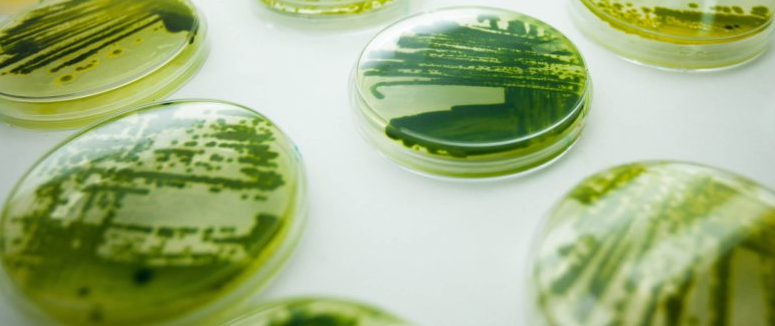In the near future, algae could be a part of your meal. As the world’s population increases and requires more protein, algae may become a regular part of people’s diets due to its nutritious benefits and more environmentally friendly method of cultivation compared to traditional agriculture.
What Is Algae?
Algae are a diverse group of simple, photosynthetic, and mostly aquatic organisms. They range from single-celled microalgae to complex multicellular forms like kelp. Algae play important roles in various ecosystems as primary producers, generating organic matter from sunlight and inorganic compounds, which serve as food for other organisms. Additionally, algae have been used for centuries in various industries, such as food, pharmaceuticals, cosmetics, and biofuels. In recent years, the use of microalgae as a food source has gained attention due to their high nutritional value and ability to be grown in sustainable ways.
Advantages of Algae as a Food Source
Algae have several advantages as a food source that make them a potential alternative to traditional agriculture. Firstly, algae can be grown using minimal resources such as saltwater, sunlight, and carbon dioxide, making them a more environmentally friendly and sustainable option.

Sustainability of Algae
Sustainability is one of the key advantages of algae as a food source. Algae can be grown using minimal resources, such as saltwater, sunlight, and carbon dioxide, making it a more environmentally friendly option compared to traditional agriculture. Unlike traditional agriculture, which requires large amounts of land, water, and other resources, algae farming can be done in various environments, such as saltwater ponds or photobioreactors, and with limited resources.
This makes it a more sustainable option for food production, as it reduces the pressure on land, water, and other resources that are required for traditional agriculture. Additionally, algae can be grown year-round and at a faster rate than traditional crops, making them a scalable and sustainable food source to meet the needs of a growing global population.
The sustainability of algae as a food source is further enhanced by the fact that it can also be used for other purposes, such as biofuel production and waste treatment, which makes it a versatile and sustainable resource.
High Nutritional Value of Algae
Algae are a highly nutritious food source, offering a wealth of essential nutrients that are vital for good health. They contain high levels of protein, making them an excellent source of plant-based protein. Additionally, algae are rich in vitamins, including B vitamins and vitamins C and E, as well as minerals like iron, calcium, magnesium, and potassium.
Some species of algae, such as chlorella, also contain high levels of healthy fats, including omega-3 fatty acids, which are important for heart health. Algae’s high nutritional density means that a small serving can provide significant amounts of essential nutrients, making it a convenient food source for people with specific dietary needs, such as vegetarians or vegans. Overall, the high nutritional value of algae makes it a promising option for meeting the food needs of a growing global population.

Versatility of Algae
Algae are a versatile food source, as they can be processed into various food products, offering versatility in cooking and food preparation. Algae can be processed into flour, oil, and protein powder, which can be used in a variety of dishes and recipes. This versatility makes algae a suitable ingredient for a range of food products, from baked goods to snacks, smoothies, and more.
Additionally, algae’s allergen-free status makes it a suitable food source for people with food allergies. This versatility, combined with its high nutritional value and sustainability, makes algae a promising alternative to traditional agriculture and a scalable food source to meet the needs of a growing global population. Furthermore, algae’s versatility extends beyond its use as a food source, as it can also be used for other purposes, such as biofuel production and waste treatment, which enhances its overall sustainability and value as a resource.
Lower Environmental Impact of Algae
Algae have a lower environmental impact compared to traditional agriculture, making it a more sustainable food source. Algae can be grown using minimal resources, such as saltwater, sunlight, and carbon dioxide, reducing the need for large amounts of land, water, and other resources required for traditional agriculture.
Algae farming can also be done in various environments, such as saltwater ponds or photobioreactors, which further reduces the pressure on natural resources. Additionally, algae can absorb carbon dioxide and other pollutants, making it a potential solution for mitigating environmental issues, such as climate change and water pollution.
The lower environmental impact of algae farming also reduces the carbon footprint of food production, making it a more sustainable and eco-friendly option. The lower environmental impact of algae as a food source makes it a promising alternative to traditional agriculture and a scalable food source to meet the needs of a growing global population.

Alage Is Allergen-free
Algae are allergen-free, making them a suitable food source for people with food allergies. Unlike other food sources, such as peanuts, soy, gluten, and dairy, algae do not contain allergens that can cause adverse reactions in sensitive individuals. This makes algae an attractive food source for people with food allergies, who may have limited options for finding safe, nutritious foods.
Additionally, the allergen-free nature of algae makes it a suitable ingredient for food products marketed to people with food allergies, increasing the availability of safe and nutritious food options. The allergen-free nature of algae, combined with its high nutritional value and sustainability, makes it a promising alternative to traditional agriculture and a scalable food source to meet the needs of a growing global population.
Potential for Large-Scale Production of Algae
Algae have the potential for large-scale production, making it a scalable food source to meet the needs of a growing global population. Algae can be farmed in various environments, such as saltwater ponds or photobioreactors, which enables its production in different regions around the world.
Algae can also be grown quickly, with some species capable of doubling their biomass in just a few hours, making it a highly productive food source. Furthermore, algae can be produced with minimal inputs, such as saltwater, sunlight, and carbon dioxide, reducing the need for large amounts of land, water, and other resources required for traditional agriculture.
The potential for large-scale production of algae, combined with its high nutritional value and sustainability, makes it a promising alternative to traditional agriculture and a scalable food source to meet the needs of a growing global population.
Challenges to Adopting Algae as a Food Source
Adopting algae as a food source is not without its challenges. One of the main challenges is consumer acceptance, as algae are a new and unfamiliar food source for many people and may have a unique flavor and texture that may not be appealing to everyone. Additionally, the cost of producing algae-based food products may be higher than traditional agriculture, which could limit its adoption.
Processing algae can also be complex, requiring specialized equipment and technology, which can increase the cost of production and limit its scalability. The regulation of algae-based food products is another challenge, as they are subject to various food safety regulations and labeling requirements, which can pose challenges for companies seeking to enter the market.
Algae as a food source is a relatively new field, and further research and development is needed to optimize production methods, improve product quality, and develop new applications for algae.
- Consumer Acceptance: Algae are a new and unfamiliar food source for many people, and there may be a barrier to widespread acceptance due to their unique flavor and texture.
- Cost: Algae production can be expensive, and the cost of producing algae-based food products may be higher than that of traditional agriculture, which could limit its adoption.
- Processing: Algae processing can be complex and requires specialized equipment and technology, which can increase the cost of production and limit the scalability of algae farming.
- Regulation: Algae-based food products are subject to various regulations, including food safety regulations and labeling requirements, which can pose challenges for companies seeking to enter the market.
- Research and Development: Algae as a food source is a relatively new field, and further research and development are needed to optimize production methods, improve product quality, and develop new applications for algae.
- Competition: Algae-based food products compete with other plant-based food options, such as soy and pea protein, which may limit the adoption of algae as a food source.
Overall, while algae have many potential benefits as a food source, there are challenges that need to be addressed in order to fully realize its potential.

